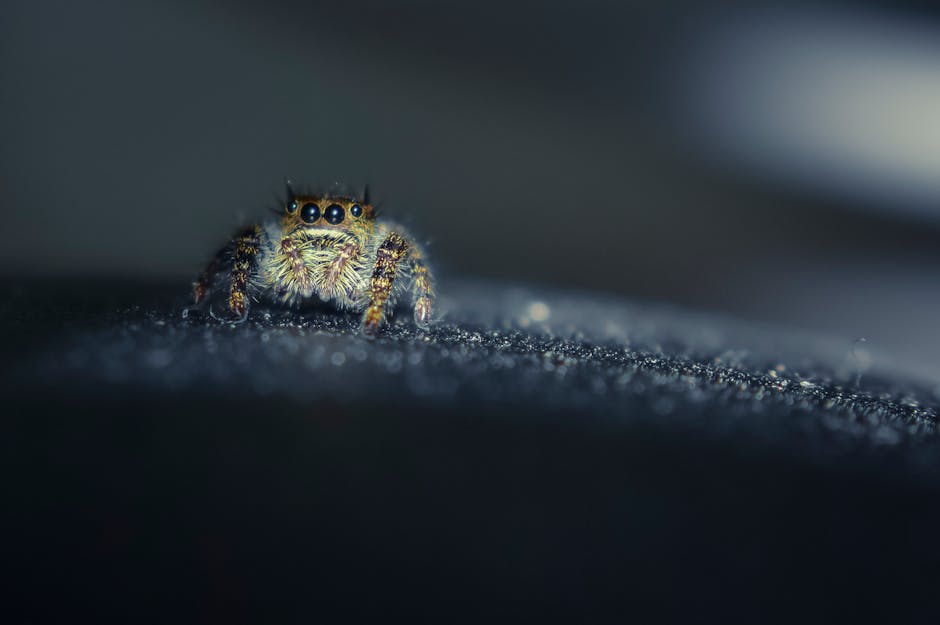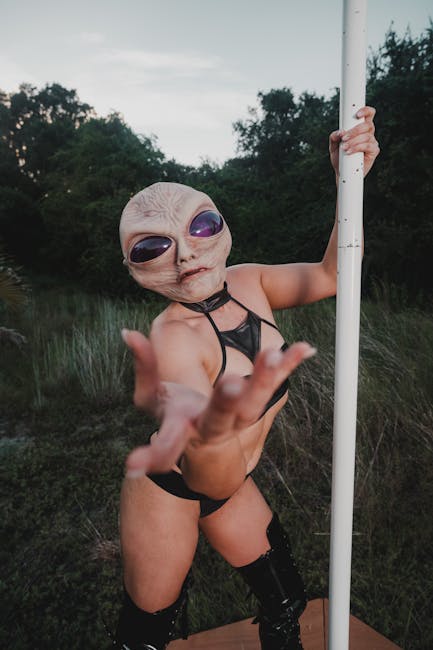Weird Creatures in Anime: A Deep Dive into Delightfully Bizarre Designs

Weird Creatures in Anime: A Deep Dive into Delightfully Bizarre Designs
Ah, anime. A vibrant kaleidoscope of stories, emotions, and…peculiar creatures! As a lover of all things stylish and uniquely Japanese, I find myself utterly captivated by the sheer imagination poured into the design of anime's fantastical beings. It's more than just monster design; it's an art form, a celebration of the wonderfully weird, and a reflection of Japanese aesthetic sensibilities. Let's delve into the fascinating world of weird creatures in anime, exploring why they resonate with us and how their designs contribute to the overall aesthetic experience.
The Allure of the Odd: Why We're Drawn to Unusual Anime Creatures

What is it about these bizarre beings that capture our attention? I believe it's a combination of factors. Firstly, anime, at its heart, thrives on pushing boundaries. It's a medium that doesn't shy away from the unconventional, and that freedom extends to creature design. We're not just seeing standard dragons or elves; we're encountering entirely new concepts of life, defying categorization and sparking our curiosity.
Secondly, these creatures often embody complex themes and ideas. They might represent aspects of the human psyche, societal anxieties, or even the beauty and fragility of the natural world. Their unusual forms become visual metaphors, adding layers of meaning to the narrative. Think about how Studio Ghibli uses its fantastical creatures to highlight environmental concerns, for instance. These creatures aren't just visually interesting; they provoke thought and encourage reflection.
Finally, let's not underestimate the power of "kawaii" (cute) even in the realm of the weird. Many of these creatures, despite their strange appearances, possess an undeniable charm. Their big eyes, expressive faces, and often clumsy movements evoke a sense of protectiveness and endearment. This juxtaposition of the bizarre and the adorable is a uniquely Japanese aesthetic that I find incredibly appealing. It's about finding beauty in the unexpected and embracing the imperfections that make something truly special.
A Taxonomy of Oddities: Classifying Weird Anime Creatures

To truly appreciate the breadth of weird creature design in anime, it's helpful to categorize them (loosely, of course!). Here are a few categories that I find particularly interesting:
- The Amalgamation: These creatures are a fusion of different animals, objects, or even concepts. They might have the head of a cat, the body of a fish, and the wings of a butterfly. Their designs are often surreal and dreamlike, defying logic but captivating the eye.
- The Grotesque Beauty: This category encompasses creatures that might initially appear frightening or even repulsive, but possess an underlying sense of beauty or pathos. Their designs often challenge our notions of what is considered attractive, forcing us to look beyond superficial appearances. Think of the creatures in some darker fantasy anime – they might be intimidating, but their designs often hold a unique artistic merit.
- The Anthropomorphic Anomaly: These are creatures that possess human-like qualities, but with significant deviations from the norm. They might have animalistic features, exaggerated proportions, or unique abilities that set them apart from humans. Their designs often explore themes of identity, otherness, and the relationship between humanity and the natural world.
- The Conceptual Being: Perhaps the most abstract category, these creatures are often embodiments of abstract concepts such as emotions, ideas, or even mathematical principles. Their designs are often highly symbolic and open to interpretation, challenging our understanding of reality.
- The Inanimate Animate: This category features objects or constructs that are imbued with life and sentience. They might be robots, dolls, or even household objects that come to life. Their designs often explore the boundaries between the organic and the artificial, questioning what it means to be alive.
Case Studies in Strangeness: Highlighting Iconic Weird Creatures

Let's take a closer look at some specific examples of weird anime creatures that I find particularly compelling. These creatures are not just visually interesting; they play significant roles in their respective stories and contribute to the overall aesthetic impact of the anime.
- Totoro (My Neighbor Totoro): This gentle forest spirit from Studio Ghibli's masterpiece is a prime example of the "Grotesque Beauty." Totoro's immense size, fluffy fur, and enigmatic smile might seem intimidating at first, but his kind nature and protective presence quickly win over viewers. His design perfectly embodies the wonder and mystery of the natural world, reminding us of the importance of respecting and protecting our environment.
- Nekobus (My Neighbor Totoro): Another gem from Totoro, the Nekobus is a perfect blend of the "Amalgamation" and "Inanimate Animate" categories. A cat that is also a bus? Utterly bizarre, yet undeniably charming! Its many legs, glowing eyes, and ability to traverse through trees make it a truly unforgettable creature. The Nekobus represents the boundless imagination of childhood and the magic that can be found in the most unexpected places.
- Mononoke (Princess Mononoke): The Kodama, the small, white tree spirits, and the Boar God Nago, corrupted by hatred, showcase both beauty and terrifying transformation. The Kodama with their clicking heads represent the tranquility of the forest, while Nago embodies the destructive power of human greed and pollution.
- Pikachu (Pokémon): While perhaps not considered outright "weird" anymore due to its global recognition, Pikachu's design is inherently unusual. An electric mouse with pouches to store electricity? It's a testament to how a seemingly simple design can become iconic. Pikachu's charm lies in its simplicity and its ability to evoke feelings of companionship and loyalty.
- Happy (Fairy Tail): This Exceed, a cat-like creature with wings, is a classic example of the "Anthropomorphic Anomaly." Happy's cheerful personality and unwavering loyalty to his friends make him an endearing character, despite his sometimes sarcastic remarks. His design is a fun and whimsical addition to the Fairy Tail universe.
- Kyubey (Puella Magi Madoka Magica): This seemingly adorable, cat-like creature with ringed ears is anything but innocent. Kyubey's manipulative nature and unsettling detachment from human emotions make him a truly disturbing character. His design is a perfect example of how a seemingly cute appearance can mask a sinister agenda. He falls under the "Conceptual Being" category, representing the cold, utilitarian nature of the universe.
- Reigen Arataka's Spirits (Mob Psycho 100): Reigen's self-proclaimed psychic abilities are often manifested through bizarre spirits. These designs, ranging from crudely drawn caricatures to unsettling abstract forms, are deliberately comedic and highlight Reigen's charlatanism. They represent the power of suggestion and the human tendency to believe in the unbelievable.
Design Principles and Japanese Aesthetics in Weird Creature Design

The design of weird creatures in anime isn't arbitrary. It's often rooted in specific design principles and reflects traditional Japanese aesthetic sensibilities. Here are a few key influences:
- Wabi-sabi: The acceptance of imperfection and transience. This principle is often reflected in the asymmetrical designs and weathered appearances of some anime creatures. It's about finding beauty in the flawed and the impermanent.
- Ma: The concept of negative space. The empty spaces surrounding a creature are just as important as the creature itself. Ma allows the viewer to focus on the essential elements of the design and appreciate the overall composition.
- Yugen: A profound awareness of the universe that evokes feelings that are inexplicably deep and stir inexplicable feelings. Many of the more ethereal or enigmatic creatures embody this principle. They are visually striking but also evoke a sense of mystery and wonder that goes beyond what can be described in words.
- The Yokai Tradition: Japanese folklore is rich with Yokai – supernatural beings with diverse appearances and personalities. Many anime creatures draw inspiration from Yokai lore, incorporating elements of traditional Japanese mythology into their designs. Think of the Kappa or the Tanuki; their influence can be seen in many modern anime.
The Future of Weird: Evolving Trends in Anime Creature Design

The world of weird creatures in anime is constantly evolving. As technology advances and artistic styles shift, we can expect to see even more innovative and imaginative designs in the future. I anticipate a greater emphasis on:
- Blending Realism and Fantasy: More creatures that seamlessly integrate realistic animal anatomy with fantastical elements.
- Exploring New Textures and Materials: Utilizing advanced animation techniques to create creatures with unique and believable textures, such as bioluminescent skin or metallic scales.
- Challenging Gender Norms: Creating creatures that defy traditional gender stereotypes and embrace a more fluid and inclusive representation of identity.
- Incorporating Global Influences: Drawing inspiration from diverse cultures and mythologies around the world to create truly unique and multicultural creature designs.
Ultimately, the enduring appeal of weird creatures in anime lies in their ability to spark our imagination and challenge our perceptions. They remind us that beauty can be found in the unexpected, that imperfections are what make us unique, and that the world is full of endless possibilities. So, let's continue to embrace the weird, the wonderful, and the wonderfully weird creatures that populate the fantastical world of anime. They are, after all, a testament to the power of creativity and the enduring human desire to explore the unknown.
Post a Comment